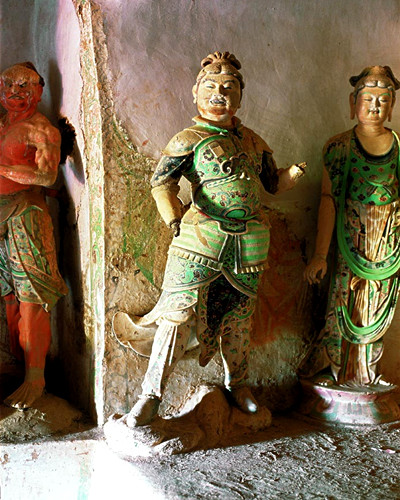Since it was accidentally discovered in May 26, 1900 by a Taoist priest who's family name is Wang, Mogao Grottoes, known as "Thousand Buddha Caves " have got the fame as the "Oriental Louvre" which is situated in Dunhuang City, Gansu Province, China. By textual research, Mogao Grottoes was believed to be constructed in the Former Qin Dynasty during the Sixteen States period. Currently, there are still 735 Mogao caves in which the murals measuring 4.5 million square meters and colorful mud sculpture amounting to 2415. In Depositarry Cave of Buddhist Texts, there stored over 50,000 pieces of ancient artifacts as the source of "Dunhuangology". In 1987, Mogao Grottoes was listed in the World Cultural Heritage list. Further information can go to Onlinechinatours.
 |
| The Outside Appearance of Mogao Grottoes |
 |
| Grand, is it? |
 |
| Surroundings, it is situated in Gansu Province, in northwest China, laking in waterfall |
 |
| A Buddha Sculpture in the Cave, over so many years, it is still remain the glory of the past. |
 |
| A perky sculpture, as if he is saying: "Am I handsome?" |
 |
| A holy Buddha sculpture with elegant bearing |
 |
| I want to worship as long as I have a look at this sculpture |
 |
| Mural paintings in the cave, still remains its original bright colour after several times repairing and renovating. |
 |
| Mural paintings |
 |
| A large mural painting with countless Buddha figures |
 |
| A mural painting |
 |
| A mural painting of three figures, what are they thinking about? |
 |
| Wow, can you count how many figues are there? |
 |
| So magical, how did the acient Chinese manage this? |
 |
| Buddhist Texts, unimaginable that it has surrived so many years. |
No comments:
Post a Comment